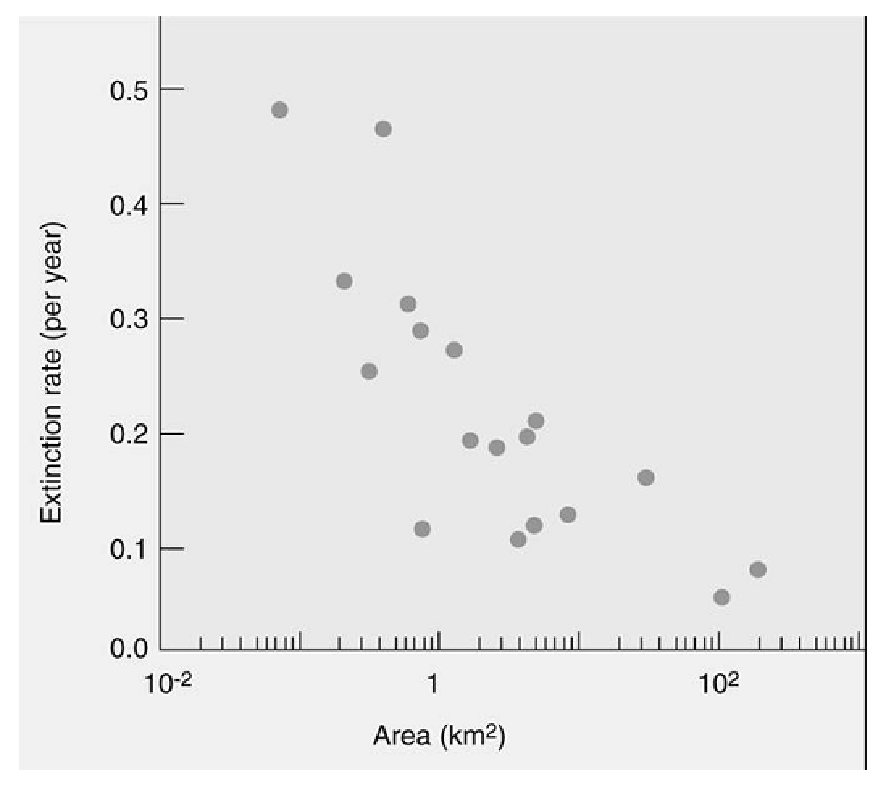Structures as different as human arms, bat wings, and dolphin flippers contain many of the same bones, which develop from similar embryonic tissues. These structural similarities are an example of _____
A) homology
B) convergent evolution
C) the evolution of common structure as a result of common function
D) the evolution of similar appearance as a result of common function
A
You might also like to view...
The following graph shows the relationship between extinction and habitat area. Which statements help explain the trend shown on the graph? Check all that apply.

_____ Larger patches are more likely to be encountered by new immigrants.
_____ Larger patches are likely to have a more uniform habitat.
_____ Larger patch size reduces genetic drift.
_____ Larger patches are more geographically isolated than smaller patches.
_____ Species richness is higher on larger patches.
Additional:
Clarify Question
· What is the key concept addressed by the question?
Gather Content
· What do you already know about habitat area and extinction?
Choose Answer
· Given what you now know, what information and/or problem solving approach is most likely to produce the correct answer?
Reflect on Process
· Did your problem-solving process lead you to the correct answer? If not, where did the process break down or lead you astray? How can you revise your approach to produce a more desirable result?
The source of the water that formed the earth's oceans was water vapor escaping from the interior of the planet
Indicate whether the statement is true or false
Which statement describes organs?
A) Each organ has a single function within the body. B) An organ always contains at least three different tissue types. C) Failure of an individual organ can affect an entire organ system. D) Most organs function to provide the body with energy.
Care in the handling and disposal of diapers in day care centers may prevent the spread of which of the following?
A) hepatitis A virus B) Giardia intestinalis C) Salmonella enterica D) Cryptosporidium parvum E) norovirus